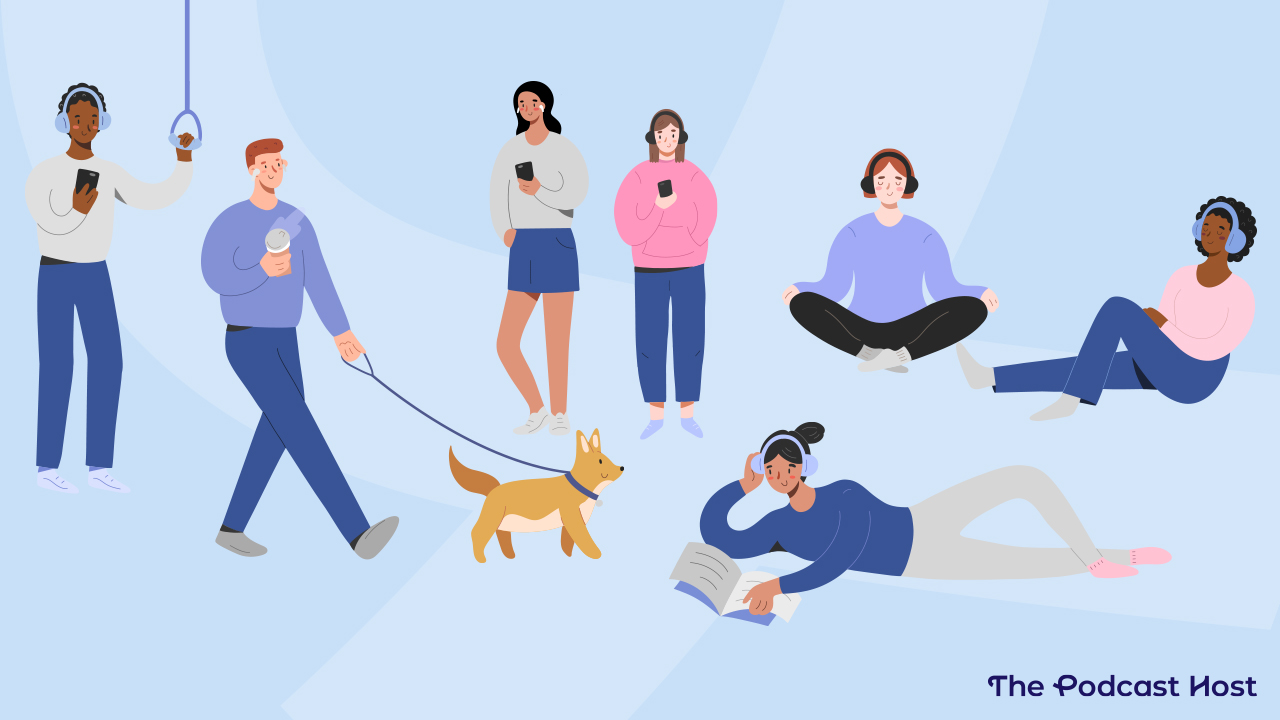Demographics, Psychographics, & Your Ideal Podcast Listener

At-a-Glance: What are demographics and psychographics all about, and why do they matter for my podcast growth?
- Demographics are the ways we describe a population using numbers. They tend to describe who people are on the outside.
- Psychographics are how we study people’s thoughts, feelings, and wants. They tend to describe who people are on the inside.
- When podcasters include psychographic data in their work, they are more likely to engage audiences on a deeper level.
- Instead of just thinking about who the podcast reaches, think about why you engage them.
- Paying attention to these factors will help your podcast grow and have its desired impact in the world.
- Read on to find out more…
Figuring out exactly WHO you’re speaking to is one of the most important tasks in podcasting. If you don’t know the listener on the other end of those earbuds, then it’s likely your content will languish in a land of ‘meh…’, forever. Simply put:
Un-targeted, un-personal content, made for everyone = un-ispiring, un-engaging content for anyone.
So, who is this real person lending you their eardrums for a short, but significant part of their life? Sometimes we call them your ideal listener, sometimes they’re an avatar, and sometimes they’re a listener persona. Whatever you call them, they’re a real person, and it comes down to knowing what type of real person you want to reach. This is a crucial part of your podcast growth strategy.
We’re written more generally about finding your listener avatar before, so pop over there for the full picture. But here, I want to get into a really specific tool for doing that, called psychographics. And, that includes the confusion over psychographics vs. demographics.
If you’ve struggled with this in the past, thinking:
“But my audience is so varied! They’re all so different! How do I choose just one?!”
Then psychographics might be the perfect approach for your marketing strategy. Let’s take a look!

Demographics vs. Psychographics
When you start thinking about your ideal listener, in most cases, you’ll go straight to the demographics. That means grouping people by:
- Age
- Gender
- Job
- Location
It’s generally an objective, physical attribute – something the person is, or something they do.
It’s a normal thing to do – we’re used to grouping people by something obvious, something we can measure.
But, there’s another way to group people which is far less obvious.
This time, it’s how they think. That’s where psychographic data comes in.
Psychographics are more about psychology than tangible attributes. So it’s down to a listener’s values, a listener’s principles, a listener’s personality. Psychographics are harder to pin down, but if you get it right, they can create a really deep connection with your listener.
When to Use Demographics
In a lot of cases, demographics can work a treat. Such as:
- a local news podcast for people who live in Edinburgh
- an educational show for dentists
- a comedy show targeted to Christians over the age of 50
In all cases, you know exactly what to cover, every single week.
Is this news interesting to a person living in Edinburgh? Yes? Stick it in. Is this something that would help a dentist do their job better? Yep? Script it! Is this a joke that would make an older person of a certain religion laugh, and not offend them? Yep! Make the funny!
But, in some cases, you might find that demographics just don’t create that connection or that personalisation that you’re looking for.
Just because someone lives in Edinburgh doesn’t mean they’re interested in every type of news. If you’re a dentist, it doesn’t mean you have the same aims as every other dentist. Being a 55-year-old Christian doesn’t mean you have the same sense of humour as every other 55-year-old Christian.
When to Use (or Add!) Psychographics
So, to really personalise, add a dash of psychographics. Let’s redo those topics above using psychographic data:
- a local news podcast for people in Edinburgh who are interested in local politics and are left-leaning
- an educational show for dentists who want to maximise the profit they make from their practice and grow their business
- a comedy show targeted at Christians over age 50 who prefer puns
You might say that Psychographics add the why to the what. Instead of just giving them the thing, you ask them why they like the thing and give them that angle on it.
It adds the personality and the values to the content, and makes it connect much more deeply with your listener. They’ll be more likely to recommend your podcast to friends who share their values and interests. That’s a marketing strategy that makes your life easier.
Psychographics and Uniqueness
Don’t think about targeting your podcast as a question of “demographics versus psychographics,” a one-or-the-other proposition. Let them work together. This approach can really help you nail down why your podcast is unique. And that’s one of the most valuable things you can do.
In a sea of podcasts, if you show the listener that you know how they think and you share their values, then you’re the one that’ll stand out.
For even more on this, read a big piece I wrote on how to make your podcast more unique.
Can Psychographics Work on Their Own?
In a lot of cases, it’s worthwhile combining both demographics and psychographics in your marketing strategy. That’ll give you some tangible and intangible targeting, the former attracting people immediately and the latter encouraging them to stay.
But, in other cases, psychographics alone are the best fit. What motivates people has a lot more to do with their desires and values than their hair colour or shoe size. Psychographic data has to do with what they want, and that motivates them to keep listening and recommend your show to others like them.
An Example of Unbalanced Demographics vs. Psychographics
This example came from a recent subscriber to our email newsletter. During one of the early emails, I ask everyone, “Who is your podcast for?” Here’s what he wrote back:
You’ve just asked me the HARDEST question! I’ve been a professional musician since 2011 and have been trying to answer this question since then, without success. Now here it is again!
Thing is, I have a superfan who is a Polish data-analyst living in London. I also have one who is a grandmother in her 70’s. I also have one who is a 16 year old girl in central USA.
They are all SO DIFFERENT. My audience spans all age-groups and all sexes, all career types and all income brackets.
So, how do I define my ideal listener!?
Guess how I responded?
“You’re thinking about demographics there. Have you ever considered psychographics?”
For his area in particular – entertainment – it’s much more often about the psychographic data.
A classic example would be the mindset that’s common to a musical genre.
Are you a punk kid or an old rocker? Do you get hyped up by R&B or techno? Are you moved by jazz, or inspired by classical music?
You might identify really strongly with a musical ‘tribe’: the attitude, the clothes, the ethos – how they really think.
But again, that’s tying yourself into a bucket, and a lot of entertainers can’t do that very easily.
So, I wonder… the granny he mentions above. That data-analyst, that girl. What’s the psychographic data here? What attitude do they have in common? What values do they have in common? What’s their mindset that you can appeal to? Your audience could be made up of people from varied places who grew up in different decades. But their desires can be similar.
The aim here is to be able to put together a short message or pitch for your show that instantly chimes with them. Something they identify with right away. It’s not their age or what they do. It’s how they think.
The balance between demographics and psychographics not only helps you create better content more easily, but it’s also a great way of adding real uniqueness to your show. To see a real example of this, continuing our musical friend’s question above, read more on how to nail down your podcast value proposition.
Can You Add some Psychographics to your Ideal Listener?
Here’s what to do now. Think about your current ideal listener in relation to psychographics and demographics. Apply some psychographic data, like:
- Are there any values that they really hold dear?
- What motivates them? What are their aims related to your topic?
- What’s their mindset? What makes the way they think different from most?
Next, put these details into the Alitu Showplanner. Even if you’ve already launched your podcast, this AI-driven tool will generate some fresh perspectives, angles, and ideas for you. We’d love to hear about them in the IndiePod Community!
